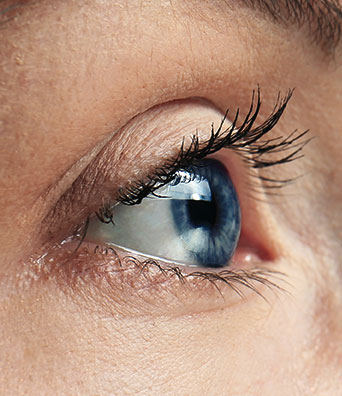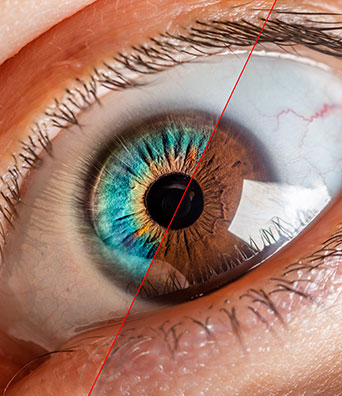Vision Therapy
What Is Vision Therapy?
Vision therapy involves the development and improvement of a patient’s visual skills and abilities. Some core aspects of vision therapy include improving the comfort of the vision, efficiency, focus, and ease. Vision therapy also leads to a change in the way a patient’s vision processes or interprets visual information.
Vision therapy can be performed and supervised either in-office or at home. At-home vision therapy is treated using reinforcement exercises performed over a week or months, depending on the patient’s condition. Most of the elements of at-home vision therapy are exercises that doctors might perform and administer at their office once or a few times a week. Apart from that, at-home vision therapies use different specialized medical equipment such as corrective lenses, prisms, eye patches, electronic targets, balance boards, or other computer software.
1. Optometric Vision Therapy (Also Known As Visual Training Or Orthoptics)
This therapy is deemed medically necessary once prescribed by an optometrist. Optometric vision therapy is a combination of in-office and at-home therapy. Additionally, optometric vision therapy is usually provided with specific medical materials that helps patients use their vision more effectively while at home, school or work. But these medical materials are less important than the feedback an optometrist provides to the patients to enable change. The success of this therapy depends on the patient’s compliance to the therapy and is continued for 6-9 months depending on the condition.
2. Behavioral Vision Therapy
3. Vision Therapy Focused To Control (Myopia)
This type of vision therapy focuses on preventing or correcting myopia (nearsightedness). However, nowadays, glasses, contact lenses, and laser surgeries are the most popular method used to correct myopia. Both vision therapy directed to prevent or treat Myopia and behavioral vision therapy are almost always self-directed programs that patients carry out at home. Optometric vision therapy on the other hand is unlike these self-directed programs marketed to the public.
Why Choose Quironsalud?
At Quirónsalud, vision therapy is conducted under the supervision of an optometrist and not heavily focused on self-directed exercises or programs, and the goal is not just to strengthen the eye muscles. The muscles of your eye are already strong, and vision therapy aims to retrain the learned aspects of vision. Each visual therapy program at Quironsalud is individually tailored to meet the needs of the patient. Visual tasks are integrated with movement, balance, hearing, speech, rhythm, and timing to develop improved visual functioning. Vision therapy may be required if you have difficulty with moving both eyes in unison, focusing, depth perception and visual perception skills.
How Vision Therapy Assessment & Evaluation Works
Who Vision Therapy Is For
Vision therapy is safe, drug-free, and effective for both children and adults. While visual acuity requires glasses to improve, visual skills such as tracking together along a line of text must be learned during development, these skills can also be improved later in life at any age.
What Is The Goal Of Vision Therapy
- Help patients develop or improve fundamental visual skills and abilities
- Improve visual comfort, ease and efficiency
- Change how a patient processes or interprets visual information
What Are The Outcomes Patients Can Expect From A Vision Therapy?
When the eyes work the right way and focus appropriately, a whole new world of vision is ensured. Successful vision therapies gives the following outcomes,
- The ability to focus and process visual information increases making learning, focusing and concentrating easy.
- Reading levels and speed can increase gradually, making it easier for children and adults to do homeworks and paperworks.
- Seeing objects nearby or at a distance improves, depending on your eye condition.
- Following moving objects like a thrown ball becomes easier.
- Easier to visualize mental images, including the orientation, depth perception, or where a person is in relation to the people or objects around.
- Symptoms of vision problems such as headache, fatigue, or double vision can improve.
- Awareness of time and space improves.
These are few common expected outcomes of a vision therapy and can vary depending on a patient’s condition. Besides, the rate at which a patient can benefit from these outcomes or progress also differs.

Vision Therapy FAQs
Problems Vision Therapy Can Correct
Strabismus
The success of vision therapy for strabismus depends on the direction, magnitude and frequency of the eye turn. Vision therapy has been proven effective for treating an intermittent form of strabismus called convergence insufficiency, which is an inability to keep the eyes properly aligned when reading despite good eye alignment when looking at distant objects.
Amblyopia
Other Binocular Vision Problems
Subtle eye alignment problems called phorias that may not produce a visible eye turn but still can cause eye strain and eye fatigue when reading also can be minimized or corrected with vision therapy.
Other Problems
Other vision problems for which vision therapy may be effective include visual-perceptual disorders, vision problems associated with developmental disabilities and vision problems associated with acquired brain injury (such as from a stroke).
Accommodative (Focusing) Disorders
Eye Movement Disorders
Book An Appointment
Fill the form below or call/whatsApp +971 50 309 3131 to book an appointment.
Early treatment can prevent long-lasting consequences

